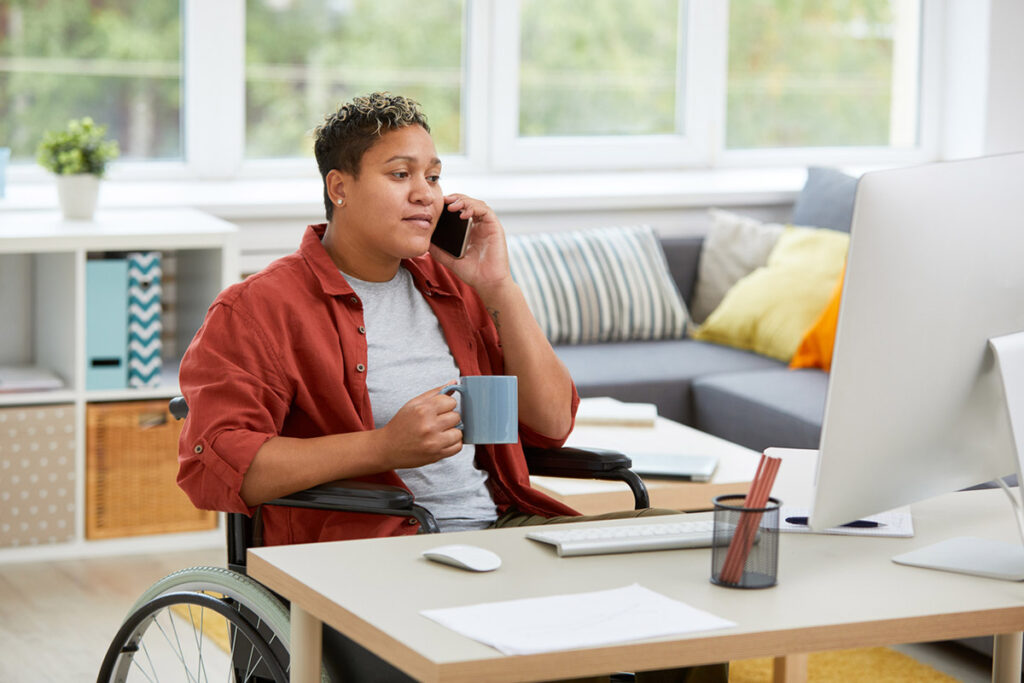If you have followed WeLearn’s Learning Development blog’s posts on women in the workplace, perhaps you have notified the two clear trends. Firstly, overall, women are facing more professional challenges than men. Secondly, the experiences of women aren’t all created equal.
Black women, Latinas, Asian women, LGBTQ+ women, and women with disabilities all face their unique difficulties. Once companies understand the depth of the situation, they can begin to work through discrimination effectively.
This post will guide you through the definition of intersectional feminism, take a closer look at ableism in the workplace, and start your journey to becoming a more empathetic and educated leader.
Employee Investment Begins With Education
What is Intersectional Feminism? For Diversity & Inclusion (D&I) efforts to yield any kind of lasting and positive result, we first need to take the time to understand intersectionality and feminism.
Feminism is generally defined as advocating for women’s rights and equality. But it is more complicated than that. For example, a white woman might experience discrimination because of her gender but not because of her race.
A black woman, however, can be discriminated against because of her gender and her race. A Latina who uses a wheelchair could experience discrimination because of her ethnicity, her gender, and her physical abilities.
Intersectional feminism takes all of these factors into consideration. It is described as the exploration of how women’s unique identities play a role in how they experience discrimination both in and out of the workplace. The components of their identities include their:
- Race
- Class
- Ethnicity
- Mental or physical disabilities
- Religion
- Sexual orientation
1989: This was the year the concept of intersectionality was labeled by the distinguished law professor Kimberlé Crenshaw. Crenshaw is also a pioneer of race theory and wrote a seminal paper on the topic. Now it’s up to us to take the term beyond academia and apply it to everyday situations.
Employee Engagement Through Common Understanding
Women With Disabilities: For women with disabilities, balancing their work lives amid the pandemic has proven to be more challenging. They are less likely to report getting the flexibility they need at work during the pandemic, and they are more likely to feel uninformed about their businesses’ workforce development changes and practices.
They are almost twice as likely as women overall to be uncomfortable sharing the challenges they’re facing with their teammates or managers, and more than twice as likely to be uncomfortable talking about their health at work.
Many women with disabilities feel they will be labeled as “weak” or “whiney” if they speak up about their challenges. So how can we combat ableism in the workplace? The first step is understanding what it means.
Empathy And You: A Learning Experience
What is Ableism? Ableism is defined as anything that devalues someone based on their disability. This also includes disabilities that are not visible, such as a mental illness. Some of the examples of ableism include:
- Invading a disabled individual’s personal space to physically assist them
- Making fun of someone who has an invisible disability with phrases like, “she’s crazy,” or “she just says she is ‘tired’ to get out of things”
- Grabbing someone’s wheelchair without their permission to “help” them navigate the workplace
Nancy Doyle, a writer for Forbes’s Diversity and Inclusion, sheds more light on the subject stating that:
“When we tell ADHD-ers to sit still, or autists to look at us, or dyslexics to spell more accurately, it is no different to telling someone with a hearing impairment to listen up, or someone with a mobility issue to walk faster, or a person of color to get their hair relaxed.”
Now that we have a better idea of what ableism looks like, we can begin to fight it.
Supporting Your Learning Experience With WeLearn’s Learning Development Blog
Women are individuals, each with their own experiences, challenges, and aspirations. When developing a new professional development method, take the time to support the women who have been denied support in the past.
If looking back, you think you have unintentionally made an ableist comment to somebody in your workplace, now is the time to address your mistake. Talk to your coworkers about intersectionality and let us know how the conversation progresses.
Have you experienced ableism in the workplace? Share your story with us! Let’s get this difficult and crucial dialogue started here at WeLearn’s Learning development blog.

